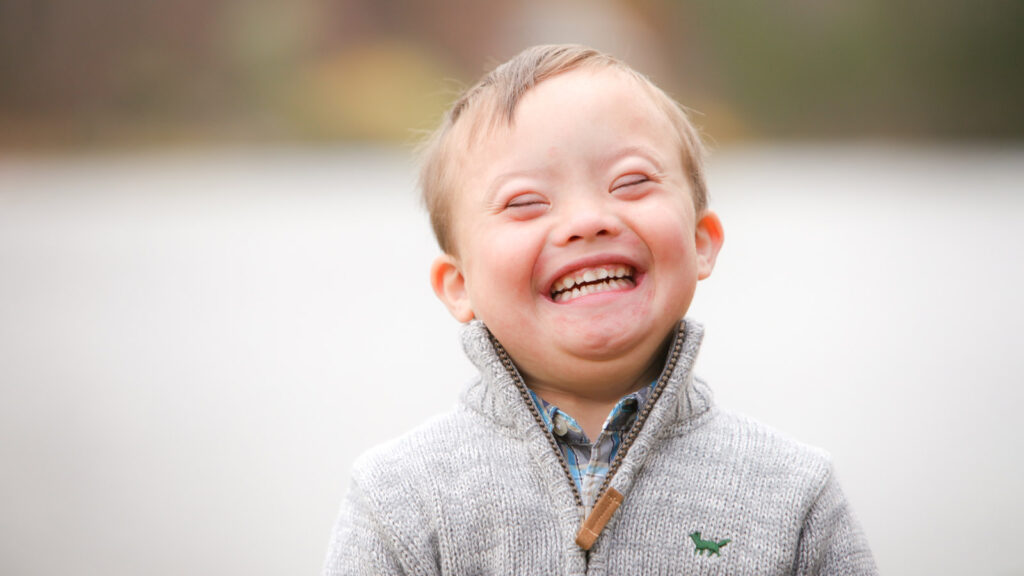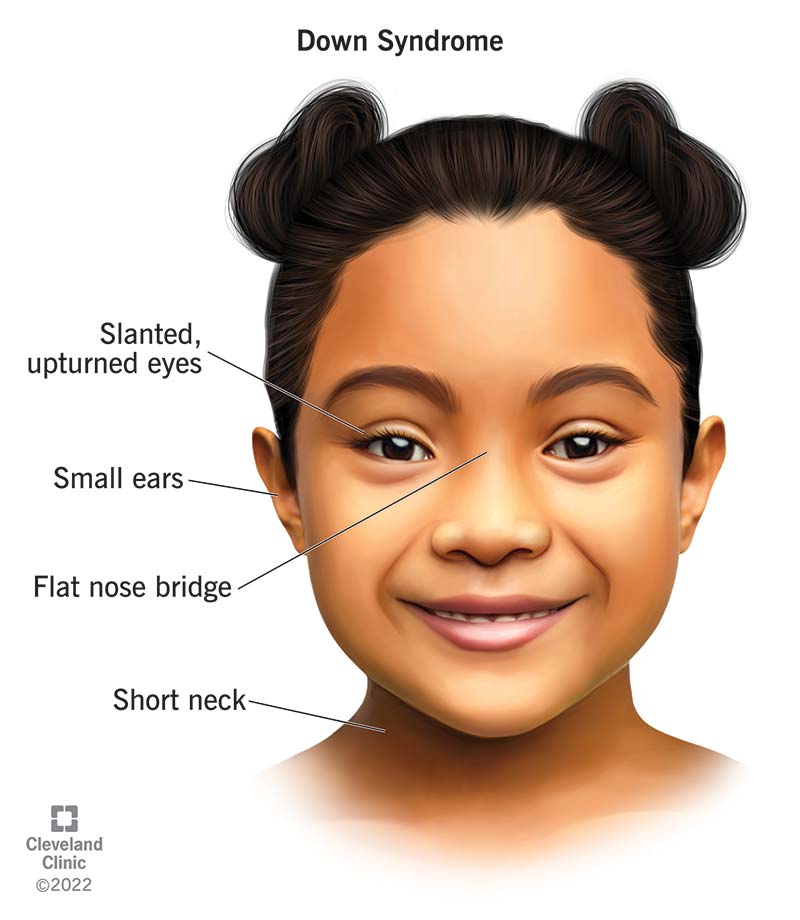Have you ever wondered what Down’s Syndrome is and how it affects individuals? In this article, we will explore the complexities of Down’s Syndrome and provide a clear understanding of this genetic condition. We’ll discuss the physical and cognitive characteristics often associated with Down’s Syndrome and highlight the importance of inclusivity and support for individuals with this condition. By the end of this article, you will have a better appreciation for the unique challenges and strengths that individuals with Down’s Syndrome possess, and the need for a compassionate and inclusive society.
What is Down’s Syndrome?
Down’s Syndrome, also known as trisomy 21, is a genetic disorder that occurs when there is an extra copy of chromosome 21 in a person’s cells. This additional genetic material affects the development of the body and brain, resulting in a range of physical, intellectual, and developmental differences. It is the most common chromosomal condition, occurring in about 1 in every 700 births worldwide.
Definition
Down’s Syndrome is a genetic condition caused by the presence of an extra copy of chromosome 21. This extra genetic material alters the course of development and leads to various physical, intellectual, and developmental differences. Although the exact cause of the extra chromosome is not fully understood, it is not related to any actions or behaviors of the parents and is simply a natural occurrence during the formation of reproductive cells.
Causes
The major cause of Down’s Syndrome is trisomy 21, where the individual has an extra copy of chromosome 21 in every cell of their body. This occurs during the formation of reproductive cells, either during the development of the egg or the sperm. In some cases, Down’s Syndrome can also be caused by a genetic rearrangement known as translocation, where a part of chromosome 21 attaches to another chromosome. Mosaic Down’s Syndrome, on the other hand, is caused by a mix of cells with the normal number of chromosomes and cells with the extra copy of chromosome 21.
Prevalence
Down’s Syndrome affects people of all races and ethnicities and is one of the most common chromosomal disorders worldwide. The prevalence of Down’s Syndrome varies across different populations, with estimates ranging from about 1 in 600 to 1 in 1,000 live births. As advancements in healthcare and prenatal screening continue to improve, more accurate prevalence rates can be determined. It is important to note that the chances of having a child with Down’s Syndrome increase with maternal age, especially after the age of 35.
Signs and Symptoms
Physical Characteristics
Individuals with Down’s Syndrome often have distinct physical characteristics that can include a flattened facial profile, upward-slanting almond-shaped eyes, a smaller nose and mouth, and a shorter neck. They may also have low muscle tone, resulting in decreased strength and flexibility. Additionally, individuals with Down’s Syndrome may have a single crease across the palm of their hand, known as a simian crease, and smaller ears.
Intellectual and Developmental Differences
Intellectual and developmental differences are commonly observed in individuals with Down’s Syndrome. Most individuals with Down’s Syndrome have some degree of intellectual disability, ranging from mild to moderate. They may also experience delays in speech and language development, as well as difficulties with fine motor skills. While individuals with Down’s Syndrome may take longer to reach certain milestones, with appropriate support and intervention, they can still achieve their full potential.
Common Health Conditions
People with Down’s Syndrome are more prone to certain health conditions compared to the general population. These can include congenital heart defects, hearing and vision impairments, thyroid problems, gastrointestinal issues, and respiratory infections. Regular medical check-ups and early intervention can help detect and manage these conditions effectively. With improved healthcare and advancements in medical management, individuals with Down’s Syndrome are living longer, healthier lives.

Diagnosis
Prenatal Screening
During pregnancy, prenatal screening tests can be performed to estimate the chance of having a baby with Down’s Syndrome. These include non-invasive methods such as ultrasound and maternal serum screening, which assess the likelihood of a chromosomal abnormality. While these tests can provide an indication of risk, they cannot definitively diagnose Down’s Syndrome. If the screening indicates an elevated risk, further diagnostic testing is recommended.
Diagnostic Testing
To confirm a diagnosis of Down’s Syndrome, diagnostic testing such as chorionic villus sampling (CVS) or amniocentesis can be performed. CVS involves taking a small sample of the placenta for testing, while amniocentesis involves collecting a sample of the amniotic fluid surrounding the baby. These tests offer a more accurate diagnosis by examining the baby’s chromosomes directly. It is important for expectant parents to receive accurate and timely information to make informed decisions regarding the health and care of their child.
Types and Variations
Trisomy 21
Trisomy 21 is the most common type of Down’s Syndrome, accounting for approximately 95% of cases. It occurs when there is an extra copy of chromosome 21 in every cell of the body. Trisomy 21 is usually caused by a random error in the separation of chromosomes during the formation of reproductive cells.
Translocation Down’s Syndrome
Translocation Down’s Syndrome happens when a part of chromosome 21 attaches itself to another chromosome, typically chromosome 14. This can occur during the development of the egg or sperm, or in early fetal development. Translocation Down’s Syndrome accounts for around 3-4% of cases and can be hereditary.
Mosaic Down’s Syndrome
Mosaic Down’s Syndrome is the least common form, occurring in about 2% of cases. In mosaic Down’s Syndrome, there is a mix of cells with the normal number of chromosomes and cells with the extra copy of chromosome 21. The presence of both types of cells can lead to varying degrees of symptoms and developmental differences.

Support and Care
Early Intervention Programs
Early intervention programs play a crucial role in supporting the development and well-being of individuals with Down’s Syndrome. These programs offer specialized therapies, such as physical therapy, occupational therapy, and speech therapy, tailored to the individual’s needs. Early intervention focuses on addressing developmental delays, promoting motor skills, language development, and fostering social and emotional growth.
Educational Support
Educational support is essential for individuals with Down’s Syndrome to reach their full potential. Inclusive education, where individuals with Down’s Syndrome are included in mainstream schools alongside their peers, has proven to be beneficial. This approach promotes social inclusion, encourages peer relationships, and provides opportunities for academic and personal growth. Specialized education programs and individualized support plans are often implemented to address specific learning needs.
Medical Management
Regular medical check-ups and ongoing medical management are crucial for individuals with Down’s Syndrome. This involves addressing any health conditions that may arise, such as congenital heart defects, vision and hearing impairments, and thyroid problems. Close monitoring and proactive intervention can help prevent and manage these conditions effectively, ensuring the overall well-being of individuals with Down’s Syndrome.
Challenges and Stigma
Societal Stereotypes
Individuals with Down’s Syndrome often face societal stereotypes and misconceptions, which can lead to exclusion, discrimination, and stigma. These stereotypes perpetuate the belief that individuals with Down’s Syndrome are unable to lead fulfilling lives or contribute meaningfully to society, which is far from the truth. Increased awareness and education are essential to challenge these stereotypes and promote inclusivity and acceptance.
Inclusive Education
Despite progress, inclusive education can still be a challenge for individuals with Down’s Syndrome. The availability of appropriate resources, trained educators, and support systems may vary across different regions. Inclusive education requires a collective effort from educators, parents, and policymakers to ensure equal opportunities for all students, regardless of their abilities. By creating inclusive learning environments, individuals with Down’s Syndrome can thrive academically, socially, and emotionally.
Employment Opportunities
Finding meaningful employment can be a challenge for individuals with Down’s Syndrome due to existing prejudices and misconceptions in the job market. However, employers are gradually recognizing the unique skills and strengths that individuals with Down’s Syndrome bring to the workplace. Supported employment programs and initiatives that foster inclusive hiring practices are emerging, providing individuals with Down’s Syndrome with opportunities to lead independent and fulfilling lives.

Advancements in Research
Genetic Studies
Advancements in genetic studies have significantly contributed to our understanding of Down’s Syndrome. Researchers continue to explore the underlying genetic mechanisms that cause the condition, which can lead to potential therapeutic interventions. Through genetic studies, scientists are uncovering new insights into the complex interactions of genes and how they influence development and function.
Potential Therapies
Research on potential therapies and interventions for individuals with Down’s Syndrome is ongoing. Emerging areas of focus include cognitive and behavioral interventions, pharmacological treatments, and gene therapy. These therapeutic approaches aim to address specific challenges associated with Down’s Syndrome, such as cognitive impairment and neurological function. While more research is needed, these advancements provide hope for improving the quality of life for individuals with Down’s Syndrome.
Quality of Life Improvements
Advancements in healthcare, education, and support programs have significantly improved the quality of life for individuals with Down’s Syndrome. Early intervention programs, specialized education, and medical management have helped individuals with Down’s Syndrome reach their full potential and lead fulfilling lives. With continued research and advancements, individuals with Down’s Syndrome can expect even greater strides towards an inclusive and accepting society.
Parent and Family Perspectives
Emotional Impact
Receiving a diagnosis of Down’s Syndrome can evoke a range of emotions for parents and families. Feelings of shock, grief, and uncertainty are common as they navigate the challenges and unknowns of raising a child with special needs. However, many parents also express immense love, joy, and pride in their child’s achievements. Connecting with other families who have similar experiences can provide valuable support and a sense of community.
Financial Considerations
Raising a child with Down’s Syndrome may involve additional financial considerations. Medical expenses, therapy costs, specialized education, and assistive devices can impact family finances. It is important for families to explore available resources and support, such as healthcare coverage, community programs, and financial aid options, to alleviate some of the financial burdens associated with raising a child with Down’s Syndrome.
Advocacy and Support Groups
Parent advocacy and support groups play a vital role in providing a platform for parents and families to connect, share experiences, and access valuable resources. These groups offer emotional support, guidance, and opportunities for advocacy to ensure the needs of individuals with Down’s Syndrome are met. They also serve as a collective voice in raising awareness, challenging societal stereotypes, and advocating for inclusive policies and services.

Positive Contributions to Society
Art and Creativity
Individuals with Down’s Syndrome often possess a unique perspective and artistic talent. Artistic expression, such as painting, drawing, and music, allows them to communicate, express emotions, and showcase their creativity. Galleries, exhibitions, and performances featuring the work of individuals with Down’s Syndrome contribute to a more diverse and inclusive art scene, enriching the cultural landscape.
Empathy and Compassion
Many individuals with Down’s Syndrome exhibit natural empathy and compassion towards others. Their ability to empathize and provide emotional support creates an inclusive and nurturing environment. This innate empathy often inspires others to be more compassionate, fostering a sense of unity and understanding within communities.
Community Integration
Individuals with Down’s Syndrome contribute to society in various ways through their participation in community activities, sports, volunteer work, and employment. Their presence encourages social inclusion, promoting a society that values individual differences and embraces diversity. By actively engaging in their communities, individuals with Down’s Syndrome showcase their capabilities and potential, challenging societal misconceptions.
Future Outlook
Increased Awareness and Acceptance
The future holds promise for increased awareness and acceptance of individuals with Down’s Syndrome. Through advocacy, education, and promoting inclusive practices, society is evolving towards a more accepting and inclusive mindset. Continued efforts are necessary to challenge stigmas, eliminate discriminatory barriers, and create a world where individuals with Down’s Syndrome are valued for their unique contributions.
Improved Healthcare and Education
Advancements in healthcare and education will continue to improve the quality of life for individuals with Down’s Syndrome. Early intervention, specialized therapies, and medical management will be further refined and tailored to individual needs. Inclusive education will become the norm, ensuring every individual has equal access to educational opportunities and appropriate support. As healthcare and education systems evolve, individuals with Down’s Syndrome will have greater opportunities to thrive.
Inclusive Society
The ultimate goal is to create an inclusive society where individuals with Down’s Syndrome and other disabilities are fully integrated and embraced. This means breaking down barriers, challenging stereotypes, and providing equal opportunities in all aspects of life, including employment, education, healthcare, and social participation. As communities become more inclusive, individuals with Down’s Syndrome will experience increased autonomy, independence, and an enhanced sense of belonging.
In conclusion, Down’s Syndrome is a complex condition that affects individuals in unique ways. With increased awareness, acceptance, and support, individuals with Down’s Syndrome can overcome challenges and lead fulfilling lives. The future holds great potential for advancements in healthcare, education, and community integration, allowing individuals with Down’s Syndrome to thrive and contribute positively to society. It is the collective responsibility of individuals, families, communities, and policymakers to foster an inclusive and accepting society, ensuring that all voices are heard and valued.
